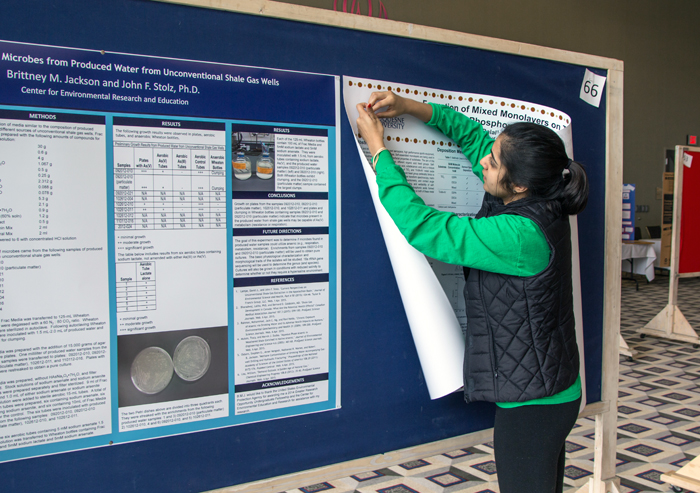08/30/2018
By Ollie Gratzinger | Opinions Editor
Beginning on Aug 25, the Post-Gazette began implementing its decision to publish only five days per week, making Pittsburgh one of the largest cities in the U.S. without a daily print newspaper, according to The Hill. On Tuesday and Saturday, the paper will run online only, much to the dismay of an older generation of readers.
The Post-Gazette has been around almost as long as the U.S. as we know it, having just celebrated its 232nd year of publication this past July. But, in light of recent tariffs skyrocketing the cost of newsprint combined with a push to digitize content, many fear that the paper is on its way out. Others, though, see the change as an opportunity to embrace something modern and new.
Steve Mellon is an adjunct professor in Duquesne’s media department, as well as a multimedia editor for the Post-Gazette.
“The general trend in the newspaper business is to move toward digital,” he said. “That’s where the readership is. That’s where the growth is.”
Another bonus of online content, as Mellon says, is it’s breadth. It can reach a farther audience faster, with more multimedia components like videos, interactive graphics and gifs. Also, it comes with none of the permanence of a physical, printed paper.
“There’s much more to offer online. It’s a much better way to deliver news. It’s much more efficient. We don’t have the same deadline structure,” he said. “Once those presses roll, that’s done. You can’t update that thing. Newspapers have been burned over and over again when stuff happens after the presses roll and then the story has changed significantly. The newspaper is stuck delivering old news to people’s doorsteps.”
The move to an online platform would cut costs dramatically, too, allowing papers to continue publication digitally rather than closing altogether, which has been the unfortunate case for some smaller papers throughout the country.
“[Tariffs] have affected a lot of newspapers. Some have had layoffs because of that. I don’t know that that’s played a role [in the Post-Gazette] but I’m sure it hasn’t helped,” Mellon said. “When you’re already really struggling, you can’t jack up the price of something like that and expect it not to have an impact.”
Even without tariffs, the expenses that come with producing a physical paper add up.
“You have to buy a bunch of paper, you have to buy a bunch of ink, you have to have a bunch of trucks to deliver the stuff all over the place, and that gets pricey,” Mellon explained. “I think in a struggling industry, the movement for some time has been toward digital for a lot of different reasons. Economic reasons, as well as you want to go where your readers go, where they’re accessing content. At some point, it’s just too expensive and too difficult to deliver a physical paper to a shrinking population.”
The future moves forward, and people read digital news on their phones, tablets or laptops now more than ever before. As of 2016, the Pew Research Center estimates that 72 percent of readers get their news on a mobile device. Likewise, the Post-Gazette cites Pew once more, stating that “total daily newspaper circulation … fell by 11 percent on weekdays and 10 percent on Sundays” in the last year.
“I think it’s inevitable,” Mellon said. “There’s nothing we can do. We can soften the blow a little bit, but in the end, I loved albums. But they went away. And I think that’s probably what’s going to happen to newspapers, too.”
The Post-Gazette has also released a slew of controversial commercial advertisements announcing the beginnings of its digitization, starring an elderly and generally unpleasant man reading a paper on a public bus filled with young people on phones. The man berates the paper and condemns its decision to digitize, and in an Aug 22 letter to the editor, a reader expresses displeasure with the campaign as a whole.
“I think your new advertising campaign insulting the demographic that has supported the PG and Pittsburgh Press for decades and decades before there was a digital anything,” she wrote. “By presenting them as caricatures of a stereotype in a negative manner, [it] is offensive, demeaning and has the complete opposite effect that you are seeking.”
“But it’s original,” she continued. “I’ll give you that.”
For as many positives there are in store for the future of digital news, it’s sad to see hard copies go.
There’s something special and uniquely authentic about physical newsprint, in all that it represents. Front page headlines throughout history, the crossword puzzles over breakfast in the morning, it seems sad to think that those little moments might soon be a thing of the past.
But progress always tends to be a little scary for the folks accustomed to the ways of old. When parchment became popular, traditionalists lamented the loss of engraved stone tablets. Someday, when the Internet fades from relevance — everything eventually does — the next big thing will be treated with apprehension, too.
The point is, it doesn’t necessarily matter how we get our news, as long as that news is gathered in a way that rings true to the honest, quality storytelling we ought to expect from our journalists.




